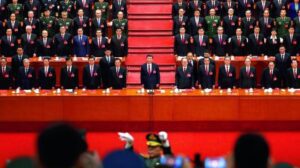Exploring China’s Political Structure
China’s political structure is a centralized, one-party system dominated by the Communist Party of China (CPC). It combines a hierarchical party-led governance model with state institutions enforcing party policies.
Below is an overview China’s political structure:
Communist Party of China (CPC)
The CPC is the supreme political authority in China. There are about 98 million members. The CPC controls all levels of government, the military, and society. Also, the party and the government are deeply intertwined. Party organs exist at all levels of government and society, ensuring loyalty to the central leadership. Thus, CPC members hold important government positions to ensure party control.
Key Organs of the CPC:
- National Party Congress: The official legislature, but its power is limited. It primarily involves rubber-stamp decisions made by the CPC. Meets every five years to set significant policies and elect the Central Committee.
- Central Committee: Acts as the party’s decision-making body when the National Party Congress is not in session.
- Politburo: A group of about 25 top leaders responsible for making key decisions.
- Politburo Standing Committee (PSC): A small, influential group comprising 7 members. It is China’s most influential & powerful body, led by the General Secretary, that makes significant policy decisions.
- General Secretary: The highest-ranking official in the CPC who holds ultimate power and authority. This role is typically held concurrently with the President of China and the Chairman of the Central Military Commission (CMC), concentrating party, state, and military power in one person. Current leader (as of 2025): Xi Jinping.
Read: Exploring Canada’s Political Structure




